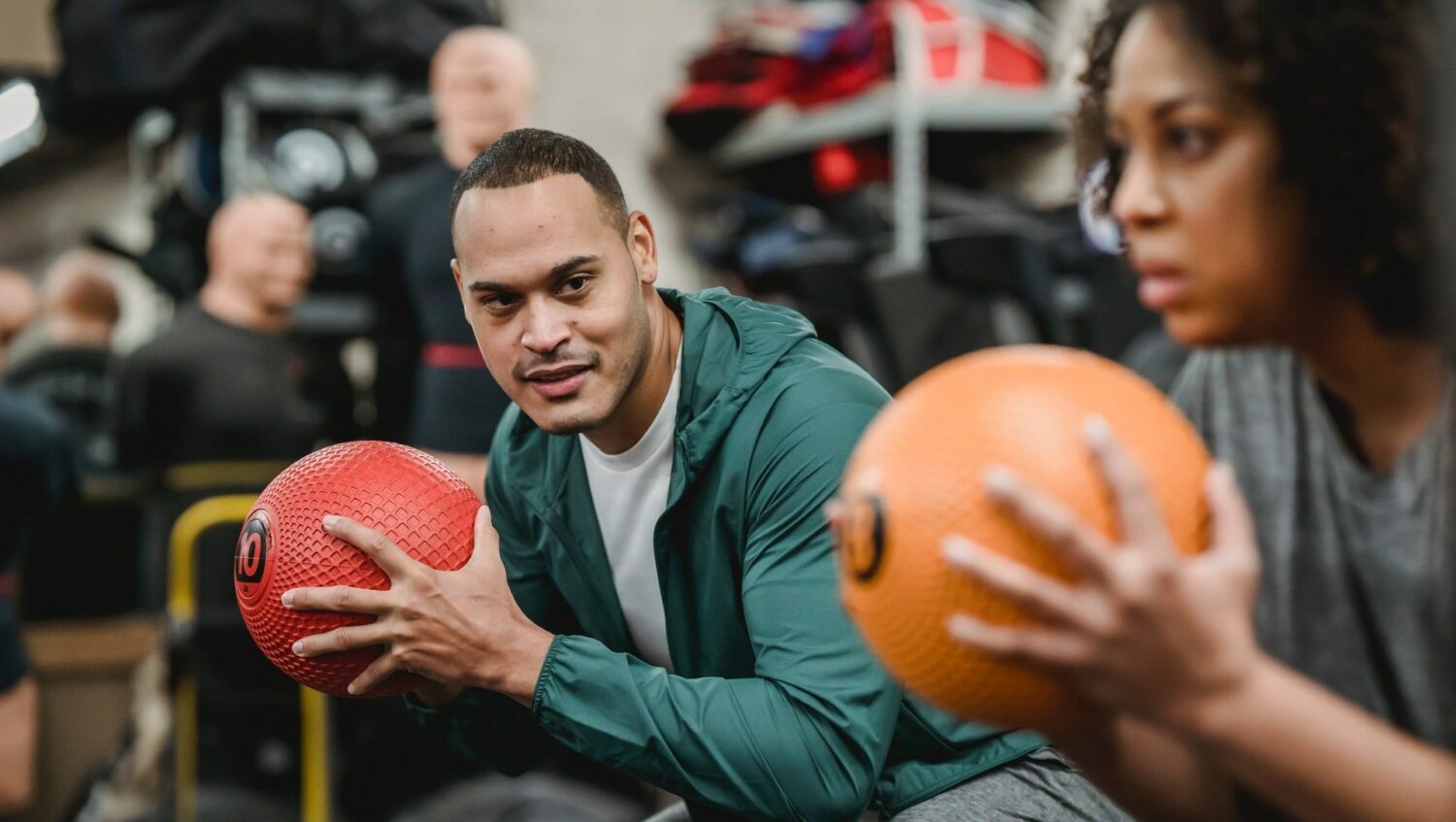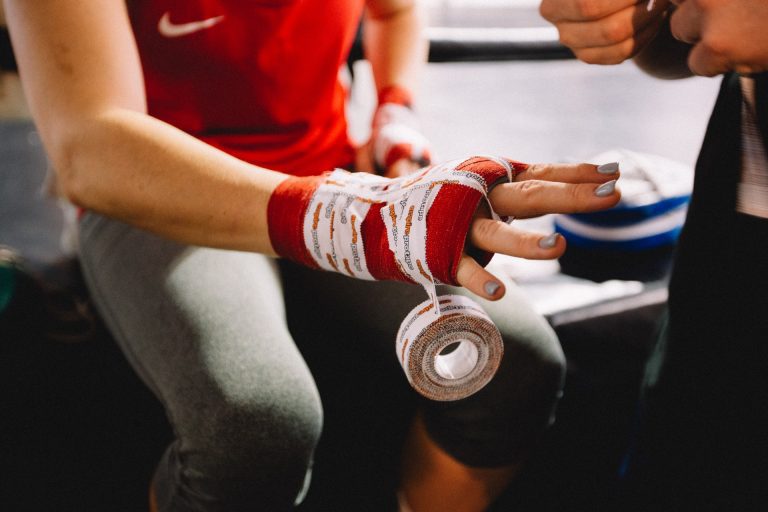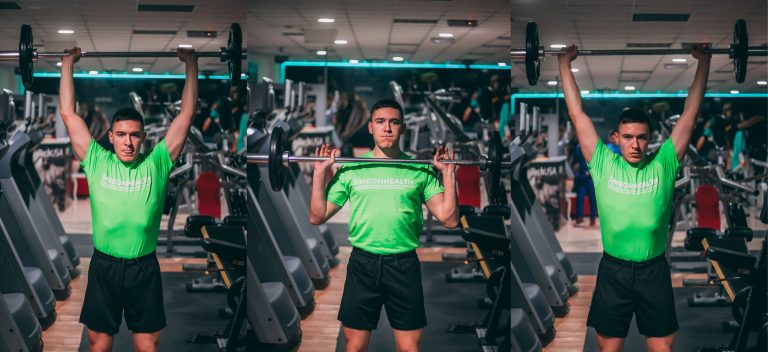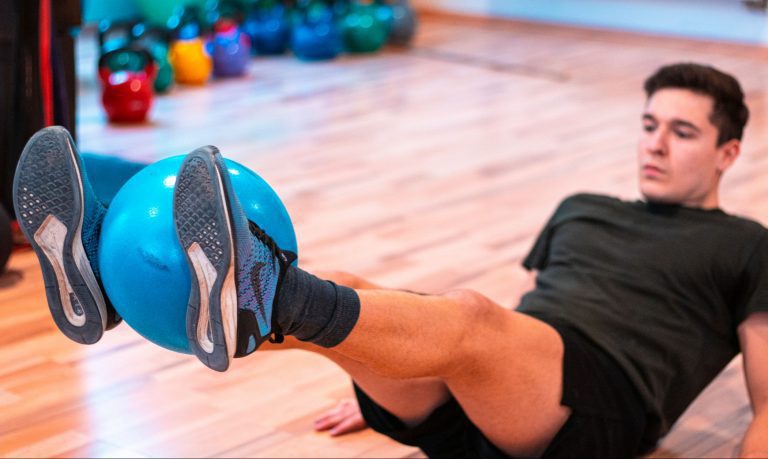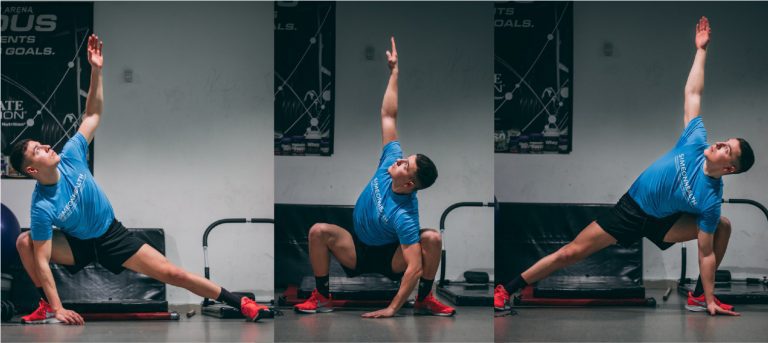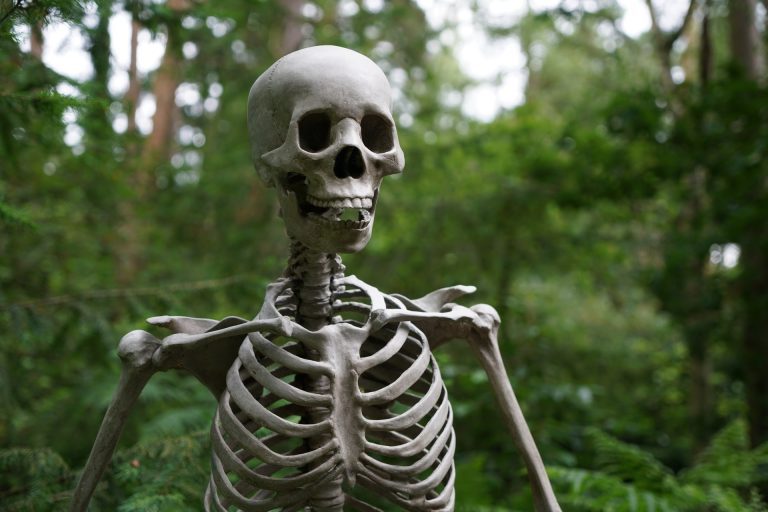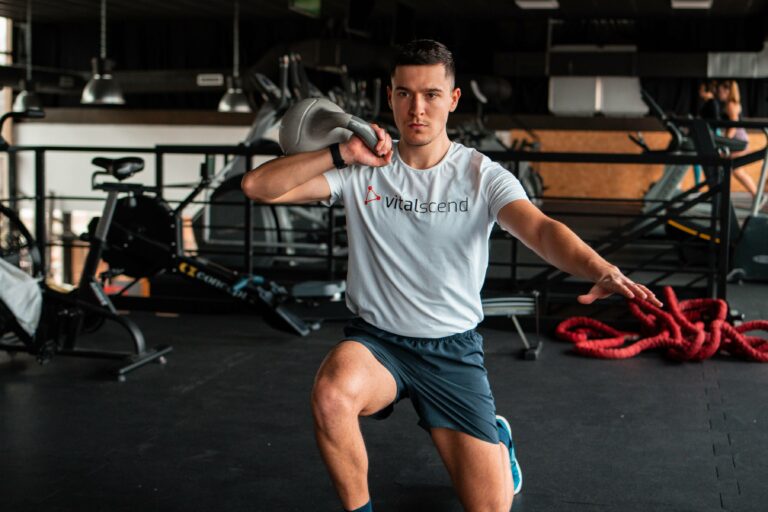Resistance Training Increases Bone Density, Health & Strength
When it comes to resistance training we all know its effects on muscle growth and fat loss, but weightlifting may provide many other beneficial effects for our bones too. In fact, high-intensity resistance training increases bone density and aerobic weight-bearing activity has the potential to stimulate bone formation, cell activity and increase bone mineral density.
Bone Mineral Density
While it is fair to say that both diet optimization, calcium and Vitamin D intake, and weight training can help in increasing bone mineral density and may be great for preventing or delaying osteoporosis, people with the condition must consult a doctor and have a unique specialist-tailored training routine because there is a higher injury risk.
- To learn more about bones and joints anatomy, feel free to check this article.
To start off, we will first look at the basic structure, function, and anatomy of the bone, define bone mineral density, its factors, and bone cell functions.
Bone Anatomy, Structure, and Function
Bone is supportive tissue, a rigid organ made up of mainly collagen and calcium. Constantly growing, regenerating, and living organ that supports the body. More bones are connected into a bigger frame we know of as the skeleton, which is our main support system that gives our bodies shape, and strength and protects the soft tissues.
Bones Function
The main functions of the bones are:
| To provide structural support for the whole body |
| To protect internal organs and soft tissues |
| To facilitate and assist movement patterns |
| To store minerals and lipids |
| To produce red and white blood cells and platelets |
Bone Structure
Bone is a very complex organ with different specialized cells and unique functions, here we will cover the basics of bone structure.
The Bone is composed of two main parts:
- A compact or cortical bone which is the outer layer that is harder, more rigid, and dense
- A Trabecular, Spongy or Cancellous bone is the inner layer, which is less dense,
The bone has a more rigid, dense, and strong part but also a more flexible and adaptable one. The Bone matrix is composed mainly of elastic collagen (ossein) and gel-like Ground substance. The combination of different minerals that bind to it, is what makes the bone strong and rigid.
Cortical bone
Trabecular bone
The Cortical bone is the strong, white, and rigid part. The inner layer is the cortical bone is known as the endosteum and the outer layer is the periosteum. Cortical bone stores calcium provides support and facilitates movement. It is made up of columns known as osteons that have a central Haversian canal (with blood vessels that nourish the bone) surrounded by lamellae of the matrix (comprised of inorganic salts and organic material) where the osteoblast (bone-forming cells) and osteoclast (bone-resorbing cells) are located.
The Trabecular bone is the internal tissue found at the end of long bones. A metabolically active tissue where red bone marrow is located, with the main function of producing blood cells. It is more vascular and lighter tissue in comparison to compact bone.
Osteoblasts and Osteoclasts Function
Bone density is a balance between bone anabolism and bone catabolism. In other words, the net gain between bone production and bone loss. The higher bone production and lower bone loss we have, the stronger and denser bones we will have.
There are three main types of bone cells, those that synthesize, those that break down, and those that regulate the micro-environment and respond to mechanical strain.
Osteoblasts
Osteoclasts
Osteocytes
Osteoblasts are cells that function to synthesize bone matrix and play a major role in bone mineralization. This process is anabolic, creating stronger and denser bones.
Osteoclasts on the other hand are bone cells that break-down bone. They play a major role in the catabolic process or bone resorption.
Osteocytes are the controlling cells that can respond to mechanical stress, send signals, and regulate mineral homeostasis.
Osteoporosis and Low Bone Mineral Density
Osteoporosis is a low bone mineral density disease that is either result of low bone production, high bone loss, or both in combination together.
The term porous bone is used to describe low BMD and can potentially put the bone at a higher risk to be injured (broken). Some factors like inactivity, chronically low calcium intake, eating disorders, or chronic caloric deficit can cause osteoporosis in the first place.
Disclaimer: This website is only made to provide educational content and NOT to replace medical advice. Make sure you consult with your doctor before trying out any exercise program, supplement, or advice from this website.
Hormones on Bone Density
Some important hormones that affect bone density are:
| Testosterone | inhibits bone resorption, strengthens bones, and maintains bone mass |
| Thyroid Hormones | too high of a concentration of Thyroxine can lead to rapid bone loss |
| Estrogen | regulates the function of osteoblast/osteocyte, low levels accelerate bone loss |
| Human Growth Hormone | growth hormones play a major role in bone remodeling and growth during puberty |
| Cortisol | chronically elevated levels lead to reduced osteoblast activity which reduces bone density |
The good news is that exercise can highly affect some of these hormones, in favor of higher bone mineral density. One of the reasons why is it reduces chronically elevated cortisol levels and increases HGH and Testosterone levels, which may lead to enhanced bone formation.
Effects Resistance Training Has on Bone Density and Strength
Now that we covered the basic structure and function of the bones, we can see what makes bones strong. A number of factors like diet, exercise, and supplementation can increase bone mineral density, which is the ratio of bone formation and bone resorption.
Exercise can affect bone density through different mechanisms some of which include:
- Increase in anabolic hormones such as Human Growth Hormone and Testosterone
- Reduction in chronically elevated levels of Stress-Hormones like Adrenaline and Cortisol
- Stimulation of Bone-Formation Cells activity or Osteoblasts
- Providing the needed adaptation to Mechanical Stress on the bone
Aside from this, through improving your muscular strength, balance and coordination, lubricating your joints, and enhancing overall joint mobility resistance training may provide additional benefit in terms of bone strength and prevent osteoporosis injuries by enhancing your physical fitness and body control.
Research on Bone Density in Relation to Training
As we already know, weightlifting can provide a mechanical load to the bone, after which a number of factors are included to provide the needed adaptation which results in an increase in bone density and strength.
A 2018 review on the effects of resistance training on Bone Health summarizes that (1)
- Resistance training can be efficient and beneficial for bone and muscle mass preservation
- To stimulate bone adaptation proper frequency, mechanical loading, and magnitude are required
- Low-impact activity like walking is not sufficient loading force for bone adaptation
- Multidirectional weight-bearing activities may improve hip and spine BMD in older adults.
- Inactive individuals should start at lower intensities, experienced would benefit from 12 RM (reps max.) of 2 sets per muscle group.
- For the specific frequency, workout intensity, and load in sedentary people or people with low bone mineral density, further research, and specific-tailored programs are needed.
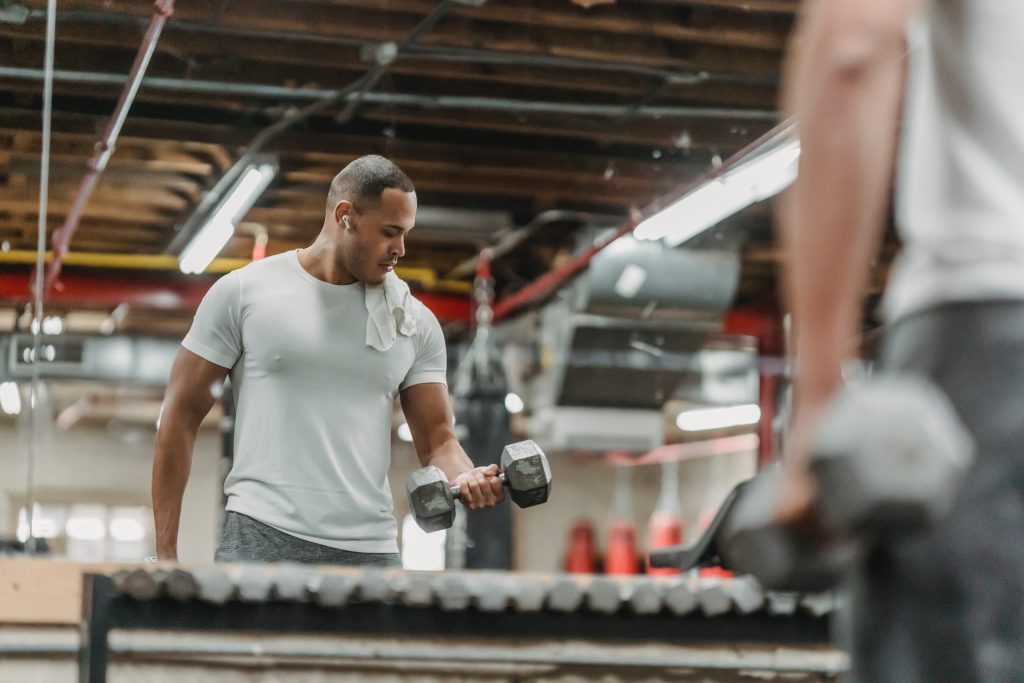
Weight-Bearing Activities May Provide Bone-Formation Stimulus
Another study implies that both aerobic and anaerobic exercise that provide weight-bearing stimulus or mechanical bone loading can be beneficial for an increase in bone mineral density. However, it turns out that resistance training can be superior to low-impact aerobic exercise, due to the higher mechanical load. (2) aside from this, strength training as said before, can further improve our stability, muscle strength, and coordination which can reduce osteoporosis injury risk and falls.
Training Structure + Mobility, Posture And Control
The weight-bearing activities for osteoporosis may be better off when structured with exercise that targets improving balance, mobility, and posture to reduce the risk of falls that can initially cause injuries. (3)
Resistance Training Improves Strength In Elderly Women
Another study published in the British Journal of Sports Medicine shows the effects of resistance training and both bone density& muscle strength in elderly women. The reason why this study is great is the duration of one year. 44 healthy sedentary women have been assigned to exercise or a controlled group. The exercise group had three 1h sessions for 52 weeks mainly focused on muscle-strengthening exercise.
Participants worked out at 75% RM, 3 sets x 8 reps. There were significant strength gains in the exercise group in the bilateral leg press, bench press, and unilateral biceps curl. Higher dynamic strength was also associated with the higher bone mineral density of the Femoral neck, Ward’s triangle, and lumbar spine. (4)
Exercise Effects On Patients With Osteoporosis
Another review supports that low-impact aerobic exercises can limit the progressive bone loss that happens with age, but is not sufficient enough to provide a high mechanical load for sufficient bone mineral density increase like resistance training.
It turns out that the type of exercise has to challenge us and present a higher than the daily regular force on the joint. Still, after reviewing other methods like Whole Body Vibration, properly structured resistance training seems to have a small, but significantly important effect in postmenopausal women. Also, multi-component or multidirectional training may be effective for spine BMD. (5)
Strength Training Increases Testosterone
As we age, our bones age too. One of the common aging deficiencies that make bones weaker in men is testosterone deficiency.
As one of the main anabolic hormones, it turns out that testosterone is pretty important for bone growth, maturation and strength too. Androgen hormones can stimulate preosteoblast proliferation which leads to increased bone production. The concentration of both androgens and estrogens is important for bone density preservation. (6)
Research Limitations
Studies have some limitations, important to evaluate the validity of their results. Here’s a highlight of some and NOT ALL studies (and limitation), shown in this article, for context.
- Aged data or data older than 10 years *2010 2009, 2008, 2007, 2005, 2000, 1999, 1996, etc.
- Further, larger and more complex research is needed to structure specific guidelines for resistance training and nutrition, specifically in older populations.
- More research in younger adults, and less research in older men.
- Review of androgen effects on bone in vitro and in vivo *may not be applicable, or have different effects.
- Minimal Resistance Training session required only 11 minute to perform.
Lack of post-test after exercise to determine acute training effect
Weak control of external factors *nutrition, sleep quality, hormone secretion, etc.
Key Points
- Bone is supportive tissue, a rigid organ mainly made up of collagen and calcium.
- Osteoblasts synthesize new bone, increasing BMD while osteoclasts play role in bone resorption.
- The Bone Mineral Density is the ratio between bone formation (anabolism) and bone resorption (resorption).
- Resistance training can improve bone mineral density by introducing mechanical load to the bone, which stimulates bone-formation factors. Whole Body Vibration Training and Low-Impact Aerobic Training may preserve bone density loss.
- The main hormones related to BMD are Testosterone, HGH, estrogen, Thyroid & Parathyroid Hormone, Calcitriol, and Cortisol.
- Strength Training may prevent or delay Osteoporosis, plus improve posture, mobility, and control that can potentially reduce injury risk and falls
Frequently Asked Questions
What is normal bone mineral density?
The normal bone density measures above -1.0 at A T-score test. From -2.5 to -1 A T score is osteopenia or lower bone density.
What is osteoporosis?
Bone-related diseases are characterized by the reduced, low mineral bone density that puts porous bones at higher risk of fracture.
How do you increase bone density?
Resistance training, Supplementation of Calcium, Vitamin D, and Zinc may help, as well as proper hydration, whole-body vibration training, optimized diet, and active lifestyle.
Which foods or supplements may lead to an increase in bone density?
Foods high in calcium, zinc, and Vitamin D such as seafood, nuts, and dairy products. Other supplements that may help are Glucosamine Sulphate & Chondroitin, Fish Oil, Vitamin D, Zinc, Vitamin C, Calcium, Boron, Vitamin K, Magnesium, and Collagen.
Can strength training lead to an increase in bone density?
Yes, both low and high-impact training can potentially preserve bone loss, but high-impact resistance training is superior to low-impact in terms of bone-mineral density increase effect, due to proper mechanical load that stimulates bone formation factors.

